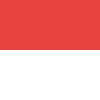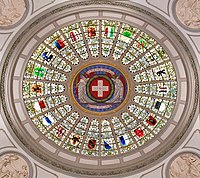
Basel-Landschaft or Basel-Country, informally known as Baselland or Baselbiet, is one of the 26 cantons forming the Swiss Confederation. It is composed of five districts and its capital city is Liestal. It is traditionally considered a "half-canton", the other half being Basel-Stadt, its urban counterpart.

The 26 cantons of Switzerland are the member states of the Swiss Confederation. The nucleus of the Swiss Confederacy in the form of the first three confederate allies used to be referred to as the Waldstätte. Two important periods in the development of the Old Swiss Confederacy are summarized by the terms Acht Orte and Dreizehn Orte.
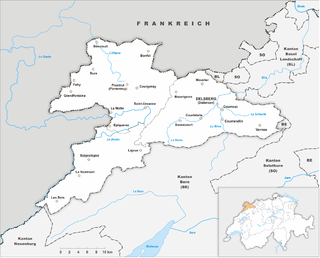
The Republic and Canton of Jura, less formally the Canton of Jura or Canton Jura, is the newest of the 26 Swiss cantons, located in the northwestern part of Switzerland. The capital is Delémont. It shares borders with the canton of Basel-Landschaft, the canton of Bern, the canton of Neuchatel, the canton of Solothurn, and the French régions of Bourgogne-Franche-Comté and Grand Est.

The canton of Schaffhausen, also canton of Schaffhouse is the northernmost canton of Switzerland. The principal city and capital of the canton is Schaffhausen. The canton's territory is divided into three non-contiguous segments, where German territory reaches the Rhine. The large central part, which includes the capital, in turn separates the German exclave of Büsingen am Hochrhein from the rest of Germany.
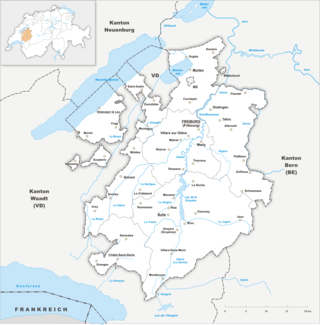
The canton of Fribourg, also canton of Freiburg is located in western Switzerland. The canton is bilingual, with French spoken by more than two thirds of the citizens and German by a little more than a quarter. Both are official languages in the canton. The canton takes its name from its capital city of Fribourg.
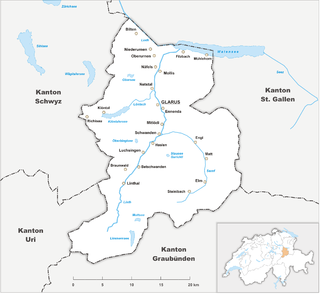
The canton of Glarus is a canton in east central Switzerland. The capital is Glarus. The population speaks a variety of Alemannic German. The majority of the population (81%) identifies as Christian, about evenly split between Protestants and Catholics.
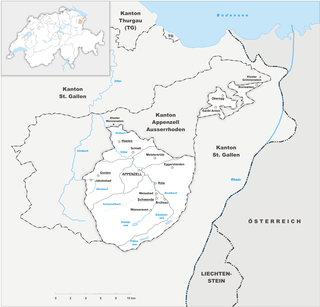
Appenzell Innerrhoden, in English sometimes Appenzell Inner-Rhodes, is one of the 26 cantons forming the Swiss Confederation. It is composed of six districts. The seat of the government and parliament is Appenzell. It is traditionally considered a "half-canton", the other half being Appenzell Ausserrhoden.

Wangen an der Aare is a municipality in the Oberaargau administrative district in the canton of Bern in Switzerland.
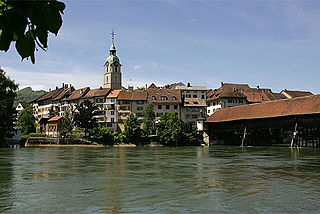
Olten is a town in the canton of Solothurn in Switzerland and capital of the district of the same name.

Districts of Switzerland are a political subdivision for cantons. In the federally constituted Switzerland, each canton is completely free to decide its own internal organisation. Therefore, there exists a variety of structures and terminology for the subnational entities between canton and municipality, loosely termed districts. Most cantons are divided into Bezirke. They are also termed Ämter, Amtsbezirke, district or distretto. The Bezirke generally provide only administration and court organization. However, for historical reasons districts in cantons Graubünden and Schwyz are their own legal entities with jurisdiction over tax and often have their own Landsgemeinde.
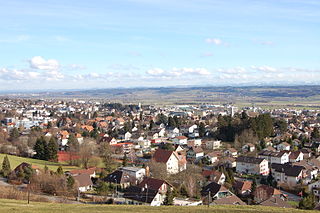
Grenchen is a municipality in the district of Lebern in the canton of Solothurn in Switzerland.

Murgenthal is a municipality in the district of Zofingen in the canton of Aargau in Switzerland.

Kleinlützel is a municipality in the district of Thierstein in the canton of Solothurn in Switzerland. It is an exclave of the Canton of Solothurn, enclaved in the Canton of Basel-Country and Alsace.

Flumenthal is a municipality in the district of Lebern in the canton of Solothurn in Switzerland.

Olten District is one of the ten districts of the canton of Solothurn in Switzerland, situated around the city of Olten. Together with the Gösgen District, it forms the electoral district of Olten-Gösgen. It has a population of 56,109.

Gösgen District is one of the ten districts of the canton of Solothurn, Switzerland, situated to the northeast of the canton. Together with the Olten District, Gösgen forms the electoral district of Olten-Gösgen. It has a population of 24,793.

Bucheggberg District is one of the ten districts of the canton of Solothurn in Switzerland, situated to the southwest of the canton. Together with the Wasseramt District, it forms the Amtei of Wasseramt-Bucheggberg. It has a population of 8,009.

Wasseramt District is one of the ten districts of the canton of Solothurn in Switzerland, situated to the south of the canton. Together with the Bucheggberg District, it forms the Amtei of Wasseramt-Bucheggberg. It has a population of 52,949.
Dorneck District is one of the ten districts of the canton of Solothurn in Switzerland, situated to the north of the canton. Together with Thierstein District, it forms the Amtei of Dorneck-Thierstein. It has a population of 20,802. Five of the district's eleven municipalities are exclaves, either within the canton of Basel-Country or bordering France.
Thierstein District is one of the ten districts of the canton of Solothurn in Switzerland, situated to the north of the canton. Together with the Dorneck District, it forms the Amtei of Dorneck-Thierstein. It has a population of 14,802.

